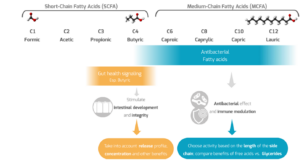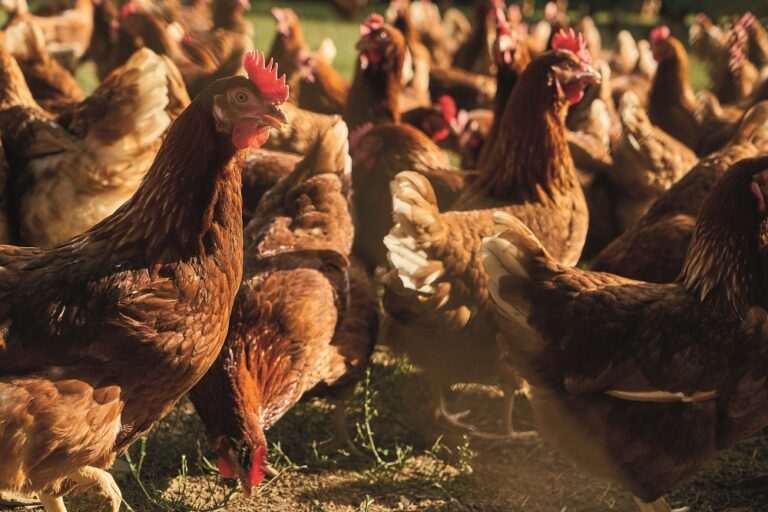By Florence Rudeaux, regional category manager, Adisseo
A healthy gut status in the small and large intestine depends on three pillars: the gut mucosa, the (local) immune system and the gut microbiota. However, these three foundations of gut health are very susceptible to imbalances, especially during early life. The villi, for example, can show signs of atrophy. Furthermore, disruption to the integrity of the epithelial lining can cause a ‘leaky gut’, and the composition of the gut microbiota labile and sensitive to the opportunistic overgrowth of potentially pathogenic bacteria, such as E. coli or Enterococcus cecorum.
In this context, organic acids, such as short- and medium-chain fatty are a family of feed supplements that have been studied extensively as a way of mitigating the negative flora intestinal imbalance. They can have distinct effects, depending on the exact nature of the molecule.
Butyric acid plays a specific role as a signalling molecule, it is one of the SCFA that is produced endogenously in the hindgut of monogastrics, where they instigate mechanisms that are key to gut health. Butyrate, in the intestine of poultry, has been shown to dampen inflammation, to increase tight junction formation and to upregulate the expression of antimicrobial peptides. However, its effect depends to a great extent on where it is delivered in the gastro-intestinal tract. Commercial products, such as fat-embedded butyrates or butyric glycerides, have a distinct butyrate release profile and trigger different physiological responses. For example, precision delivery coated butyrate in a strong E. coli challenge model has proven to be more effective in improving the morphology and performance of the gut than unprotected butyrate.
Medium-chain fatty acids (MCFA), however, are best known for their antimicrobial activity, these characteristics can be attributed to their molecular structure, which can interfere with the membranes of bacteria. To use MCFA optimally, two considerations should be made. The first is the length of the side chain: for activity against Gram-positive bacteria (e.g., Clostridium perfringens) lauric acid (C12) has typically emerged as the ‘best in the class’ in in vitro screening assays when comparing the antibacterial effect of SCFA and MCFA. On the other hand, certain Gram-negative bacteria (e.g. E. coli or Salmonella) are more sensitive to shorter MCFA and SCFA (C3-C10). The second consideration is the choice between free MCFA or MCFA-glycerides: free MCFA are rapidly absorbed in the first part of the GIT, and are pH-dependent, while MCFA-glycerides are pH-independent and can be enterically delivered. In addition, the antimicrobial effect of glycerides (especially alpha-monoglycerides) is much more pronounced than that of free fatty acids.



